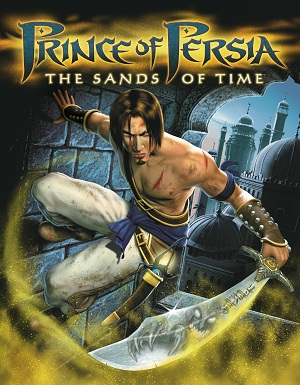
I had a late start into the world of PC gaming. Growing up, gaming was limited to my parents’ Windows 95 machine and the only games they were willing to get for me were Jumpstart Grade School educational games. I didn’t have a proper gaming machine until I was in High School, with my budget Intel Core 2 Duo and Nvidia 9400 GT graphics card. At the time, though, these specs were already substandard as the first generation of i3’s, i5’s, and i7’s were just introduced and the GeForce GTX was riding high with its introduction of the 200 series. What my machine was good for was playing the hit games from yesteryear, which was how I was introduced to the Prince of Persia: Sands of Time.
A buddy of mine from High School shared how much he loved The Sands of Time game and how it easily fit into his List of Best Games of All Time. I was always interested in story-driven, single-player games. Despite my parents’ insistence on only getting me “edu-tainment” games growing up, I was able to convince them to buy the occasional Triple-A title once in a while. Games like Star Wars Rogue Squadron and Medal of Honor Allied Assault were among my games library alongside Jumpstart 3rd Grade and Typing. After convincing my dad to indulge my desire for a gaming PC (I did need my own computer for schoolwork anyway) I was ready to try out my friend’s copy of Sands of Time.
The game takes place mostly in an unnamed Middle-Eastern palace set in a Thousand and One Arabian Nights-esque magical time period. It stars the titular Prince, the youngest son of King Sharaman of Persia.When their army invades India they are unwittingly tricked by the treacherous Vizier into unleashing the mystical Sands of Time, a terrible artifact that corrupts and destroys all that it touches. The Prince must team up with Farah, the daughter of the Maharajah of India, to turn back time and prevent the Sands from ever being unleashed.
POP SOT is equal parts puzzle-platformer and action-adventure. The Prince’s excellent parkour skills allow him to run along walls and leap distances in order to solve puzzles. Meanwhile, his agile fighting style lets him fight off multiple attackers. Perhaps the game’s most unique mechanic is its command of Time Powers. With the Dagger of Time, the Prince can utilize captured Sands to manipulate Time, such as reversing it, slowing it down, or freezing time altogether. The Prince must utilize these time powers and his acrobatic skills in order to traverse the palace’s traps and fight enemies.
The game’s story and mechanics meshes seamlessly well in order to create a wonderful final product. The Prince’s early arrogant aristocratic nature is chipped away as time passes and he realizes how it was his hubris that allowed disaster to unfold.The characters complement each other so well. The Prince’s proud and brash nature with Farah’s innocent and eager personality helps develop each other’s character arc. Their interactions were very well written and it helped them feel like real people rather than a series of character tropes videogames would handpick to establish protagonists. There is a scene where the Prince and Farah are trapped in a tomb and the game hints at the Prince’s claustrophobia.
“Are you alright? You’re shivering,” Farah inquires.
“I just don’t like enclosed spaces.That’s all,” the Prince replies.
To me, the Prince’s fear of being trapped just underlined his character so well when you consider his love of parkour and freedom of movement.
The game isn’t without faults. For every step towards perfection, it also manages to take one step backwards. Perhaps the one foible of the game is its combat. Simple and repetitive would be a generousway to describe it. Though it makes sense story-wise that the Prince is not a peerless swordsman/warrior (he remarks early in the game that he “will bring honor and glory, not through battle, but by being first to reach the Maharajah’s treasure hold,”) it drags the game down when you fight nearly all enemies with the same one or two combos. The final boss fight is incredibly unrewarding. /Spoiler alert/ When you reach the Sands and turn back time to before the start of the game, you have a final confrontation with the Vizier. But it’s hardly a challenge because you are at the height of your powers, having unlocked all the time powers of your Dagger and the Vizier isjust a frail old man with tuberculosis even if he is endowed with mystical powers of his own /End of Spoiler/.
Despite its weaknesses POP SOT is still a great game and I would say it still holds up well compared to modern games of today. The environments are still beautiful and the level design ensures that platforming is clever and very intuitive. I would go so far as to say as it is the best Ubisoft game from the PS2 generation. If there were any IP’s from Ubisoft’s library that could use a revival, Prince of Persia would definitely be the one.
